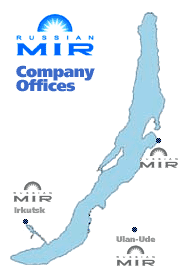Grand TeaRoute
Kiakhta and TeaRoute
The history of Kyakhta differs from that of other cities of Eastern
Siberia. The majority of them was founded as military outposts, but Kyakhta was founded as a trading center. The city is situated at Russian — Mongolian borderline, 30 km from the railway station Naushky
and 235 (146 mls) km from the city Ulan-Ude. The name of the city is translated from the local Buryat language as «wild onion» (it used to be a lot of it there).
The foundation of the city is closely connected with Russia's
exploration of Siberia. There were some expeditions of Russian
ambassadors to China organized in the 17th century, which were aimed at establishing trading relations between the countries.
In 1726 and 1728 two trade treaties were signed by a talented Russian
ambassador Saava Raguzinskii. These treaties opened a new epoch in the Russian-Chinese trade relations. The borderline was defined and all the conditions and rules of the trade were determined.
The trade row including 24 shops and 32 merchants' houses was built by the end of 1728 in Kyakhta. Another trade town was built opposite
Kyakhta on Mongolian side, called Maimachen. It was built by the people
from northern Chinese province Shanci.
Kyakhta was the only city in Russia at that time where trade was based
on barter. The main income, determining Kyakhta's prosperity was tea trade, which was exchanged by the Chinese into furs, fabric and other
goods. Tea came to Kyakhta first than Verkhneudinsk (Ulan-Ude now),
Irkutsk, after that to Tumen through Tobolsk to Irbitskaya,
Makaryevskaya and Nizhegorodskaya fairs. The drink soon became so popular that Chinese merchants decided to bring other stuff connected
with tea like cups, teapots, sugar, even furniture for tea ceremony. To protect tea from rot and dust tea was sawed into bulls' skin with the fur inside and the caravans brought them to Nizhegorodskaya fairs. It would take 120-156 days in winter and 178-223 days in summer to bring
it there!
That was the way tea trade was organized which was of second importance
after Silk Road by the income. Kyakhta's trade got 10% of Russian
foreign trade.
Kyakhta got a special importance in the 19th century, when tea became
popular not only in Russia but in European countries as well. The city
changed also. Money from good income, a lot of donations made by rich
merchants, money from the taxes was used in the construction of the city. The architecture was richly represented by the city square,
beautifully decorated streets, a lot of travelers dreamed of seeing
with their own eyes.
Kyakhta's merchants spent big sums of money on ordering the projects of their mansions designed by Italians architects. The trade row and Saint
Trinity Cathedral built in classicism style testifies to a great
architectural beauty and professionalism. Kyakhta was famous by another
Resurrection church. The project of its iconstand made of crystal and the icons painted by Italian painter Edward Reikhel are still kept in the local museum of regional studies. That church is one of the best
architectural monuments of Siberia.
After the construction of the Suez channel another more convenient way of tea transportation from China to Russia and Eastern Europe through
Odessa appeared. The trade in Kyakhta was reduced. The construction of the Trans-Siberian railway took last Kyakhta's income away. Merchants
having no more income went back close to Russia's capital.
Kyakhta contributed to the history of Russia and Siberia a lot.
Nowadays the buildings testify to the city's grandeur and prosperity.
Cultural achievements of its citizens, teachers and scientists are not forgotten as well. Nearly all the routes of the scientific expeditions
were worked out and organized in Kyakhta inckluding such expeditions as Miller's, Laksman's, Pallass's, Gmelin's ones. The Decembrists -
brothers Bestuzhev, Trubezkoy, Gorbacevskyi, Volkonsyi visited Kyakhta.
A lot of famous scientists used to work and live there, for example
Shilling P.L., Bichurin N.Y., Kovalevskyi O.M., Talko-Grinzevich and Groom-Grizhmailo G.E.
27.05.2008
|


Our address
670000, Ulan-Ude,
Profsoysnaya Street, 31
Tel/Fax Ulan-Ude:
8 (3012) 216-177
664025, Irkutsk,
Rossiyskaya Street, 6. Office 2
Tel/Fax Irkutsk:
8 (3952) 342-043
ICQ: 616-858-802
Skype: russianmir
e-mail: russian-mir@yandex.ru
Certif. РОСС.RU.АЮ03.У00830

|



